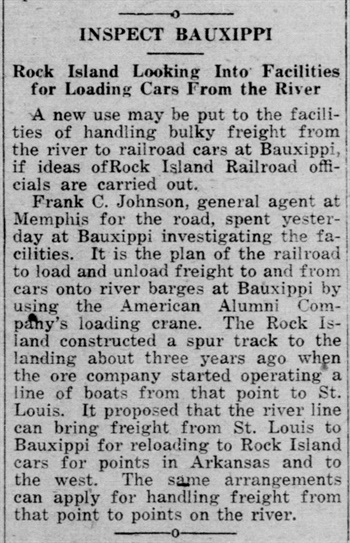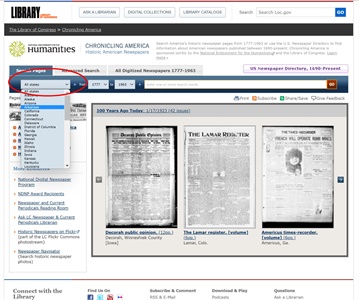At the time, digitized newspapers were in their infancy, but exhibiting a kind of academic Stockholm syndrome, I told myself that this way, the slow way, would end up being better, that I was getting a richer sense of local happenings by plodding along rather than just entering the desired search terms and sifting through the results. Granted, sometimes I scrolled through those ten years and came up with absolutely nothing, but it seemed to me a small price to pay for the granular feel of local events. Or so I convinced myself.
Fast forward more than a decade, and I have long since shed that superior feeling I had cranking through the microfilm. In fact, my own personal research has been immensely augmented by digitized newspapers. For example, back in 2022, I was looking for some event that happened in 1915 when I caught sight of an article on “riots” then occurring in the Brushy Island region of northern Pulaski County. What on earth was this? I had not even heard of Brushy Island, much less this years-long series of violent episodes, but a quick search of place and people names through the digitized state newspapers made available through both Chronicling America and Newspapers.com quickly had me loaded up with dozens of articles, published across decades, allowing me to cobble together not only an Encyclopedia of Arkansas entry but also a longer article for the Pulaski County Historical Review.
Afterward, I went back and checked the Gazette Index, and it showed no entries for Brushy Island. This entire episode could have remained unknown were it not for digitized newspapers.
At the Encyclopedia of Arkansas, we use the products of the Arkansas Digital Newspaper Project in a number of ways. First, as I mentioned above, this resource is invaluable for the composition of entries, and we direct authors to Chronicling America all the time. My colleague Mark Christ, for example, went on a tear writing entries on fatal steamboat disasters that occurred in Arkansas waters, a feat made possible by access to both state and national newspaper accounts through Chronicling America. Second, we use digital newspapers for fact-checking entries. The ease with which one can do keyword searches or browse by issue has greatly reduced the time we must devote to this stage of the editorial process, and when someone sends us a proposed correction to an entry, we now have a much more efficient way, depending upon the subject, of confirming or disconfirming the information sent. Third, we use clippings from digital newspapers to illustrate entries. We like to have at least one piece of media for every entry on the Encyclopedia of Arkansas, and sometimes newspapers are the only source of extant photographs of certain subjects, but even when no photographs are available, the clippings of stories can still convey the tragedy of an event or the reputation of an individual.
Back when I was cranking through all that microfilm for my dissertation, I imagined that I was having a truly granular experience of local history. But with the work being done by the Arkansas Digital Newspaper Project, we can bring that granularity of experience to the average user of the Encyclopedia of Arkansas.

When the Encyclopedia of Arkansas launched on May 2, 2006 (has it been nearly twenty years?), our primary goal was to provide a basic resource that would ably serve students and teachers of Arkansas history. However, with continued support from the Central Arkansas Library System, along with other sources of funding, we have been able to maintain the pace of our entry development, adding 467 entries in 2023 alone and recently passing 7,500 entries in total. Many of the entries we are adding these days constitute rather hyper-local information, such as the whole array of Civil War military eventsthat occurred in the state, all those steamboat disasters mentioned earlier, every single community in every single county no matter how brief its existence (hello, Bauxippi!), state legislators no matter how short their service, all U.S. and Arkansas highways, every National Register and Arkansas Register property, and so much more. Among other projects, we recently assembled a chart, of all the executions in the that occurred in the state and appended it to our capital punishment entry. In the process of building out this chart, and developing entries on each execution, we’ve been tremendously reliant upon the digital newspapers made available through the work of the ADNP, especially for those years when executions were not overseen by the state but by the county.
In other words, so much more local history has been made much more easily accessible for us, and so in turn historians and genealogists, whether professional or amateur, can use those resources to produce work that is much more locally focused, that begins to center the various communities of our state in their own dramas, rather than continually pushing them to the periphery of Arkansas’s story, America’s story. The Arkansas Digital Newspaper Project easily ranks alongside the establishment of the Arkansas Historical Association (and its publication of the Arkansas Historical Quarterly), the founding of the Arkansas State Archives itself, the establishment of the University of Arkansas Press, and the creation of the Encyclopedia of Arkansas as one of the top developments in state historiography. I’m proud of the minor role I’ve played on the advisory committee through the years, and I will always be an avid user of the materials the ADNP has made available.
Now if we could just get the U.S. Congress to revise copyright law so that we can move beyond the 1920s….
The Arkansas Digital Newspaper Project (ADNP) works with partners across the state in the promotion and digitization of historic newspapers as part of the National Digital Newspaper Program (NDNP). Guy Lancaster, member of our advisory committee for NDNP and editor of the Encyclopedia of Arkansas, shares how his team at CALS uses Chronicling America's historic issues of Arkansas newspapers for research. Visit encyclopediaofarkansas.net to learn about his work with the Encyclopedia of Arkansas and visit chroniclingamerica.loc.gov to begin your own research.

